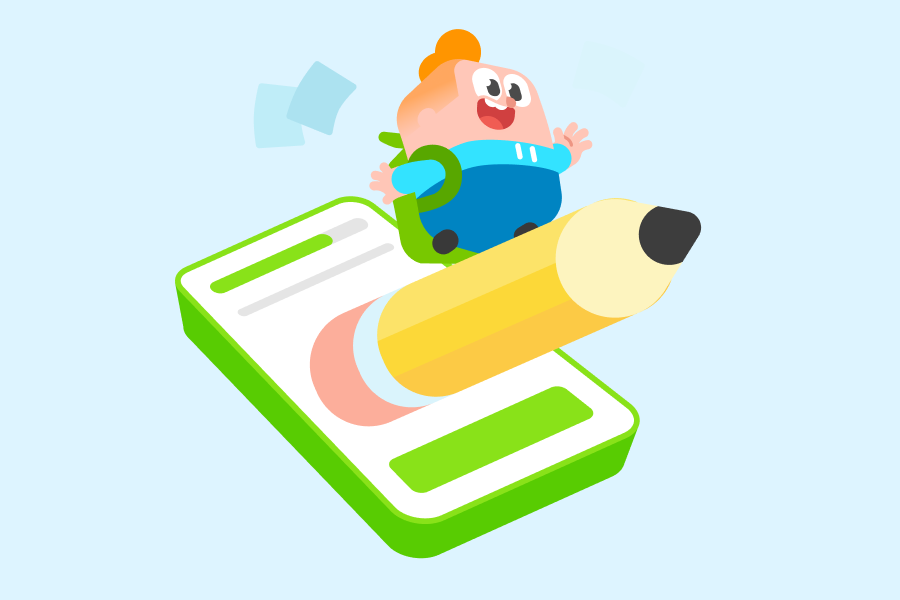This is the third of four posts about the most important skills for a language learner: reading, listening, writing, and speaking. Each week, we’ll focus on a different skill to understand how it works, the best way to learn it, and how you can practice it! This week our focus is on writing.
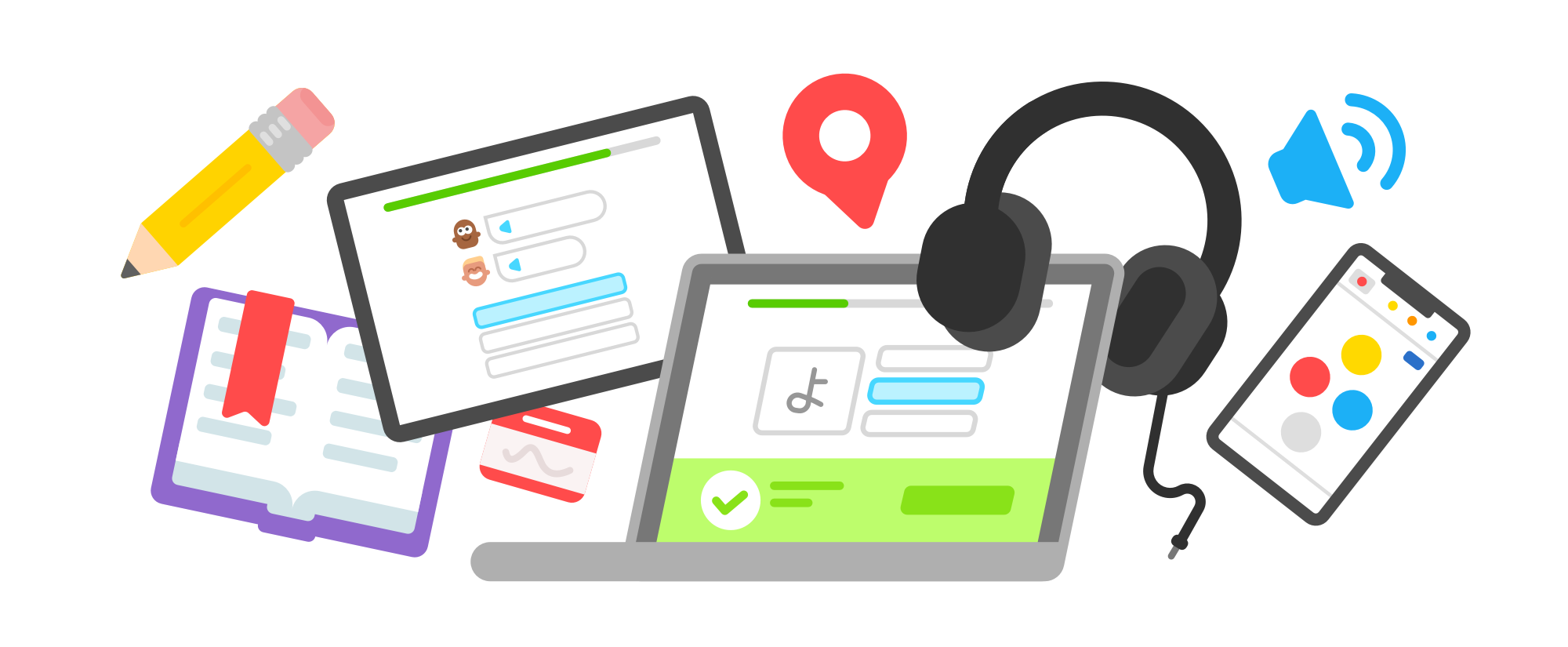
Writing is a skill that connects us with friends, family, and even strangers across long distances—and we can revisit written messages in letters, newspapers, and group texts long after they were first written. Humans have evolved all kinds of written communication systems since our days of painting shapes and animals (probably owls) on cave walls, and today writing is especially important because of digital communication.
For many learners, writing in a new language is a chance to express yourself and engage with a new language community while still being able to think through and edit exactly what you want to say. Writing is great for strengthening the language in your memory, and there are lots of meaningful ways to practice writing in your everyday life, whether through pen and paper or on your favorite screen. In writing, you can also draft a sentence and then… revise it… ummm, we mean, go back, cross out, and edit until you’re satisfied with the result. Now that reads better, doesn’t it?
No matter if you are writing a text message to your sister or contributing to an online fandom, we want to make sure you’re ready to express yourself in writing! In this post we dive into how we teach writing at Duolingo, what the science says about how writing works, and the best ways for learners to practice it.
Duolingo’s all-star lineup
Because writing is such a good way to get practice pulling words out from your memory, our lessons start building writing skills right away! As you’ve already seen, all the language skills are closely tied together, so becoming comfortable with writing also means connecting with other skills. In your Duolingo lessons, tapping on a written word triggers a sound recording, so you can listen to what words sound like to build connections between sounds and writing.
We scaffold, or carefully structure, how we teach writing so that you start with simpler words and phrases and word banks until you’re ready for longer writing on your own. Even the exercises where you tap on words in a word bank are training your writing muscles for the real deal! Here are some of the places you can get writing practice on Duolingo:
- Writing, from one perspective, is about connecting written squiggles (whether letters, syllables, characters, or something else) with sounds and meanings. More and more of our courses now include special exercises to build these connections to prepare you for writing. See more in our reading post!
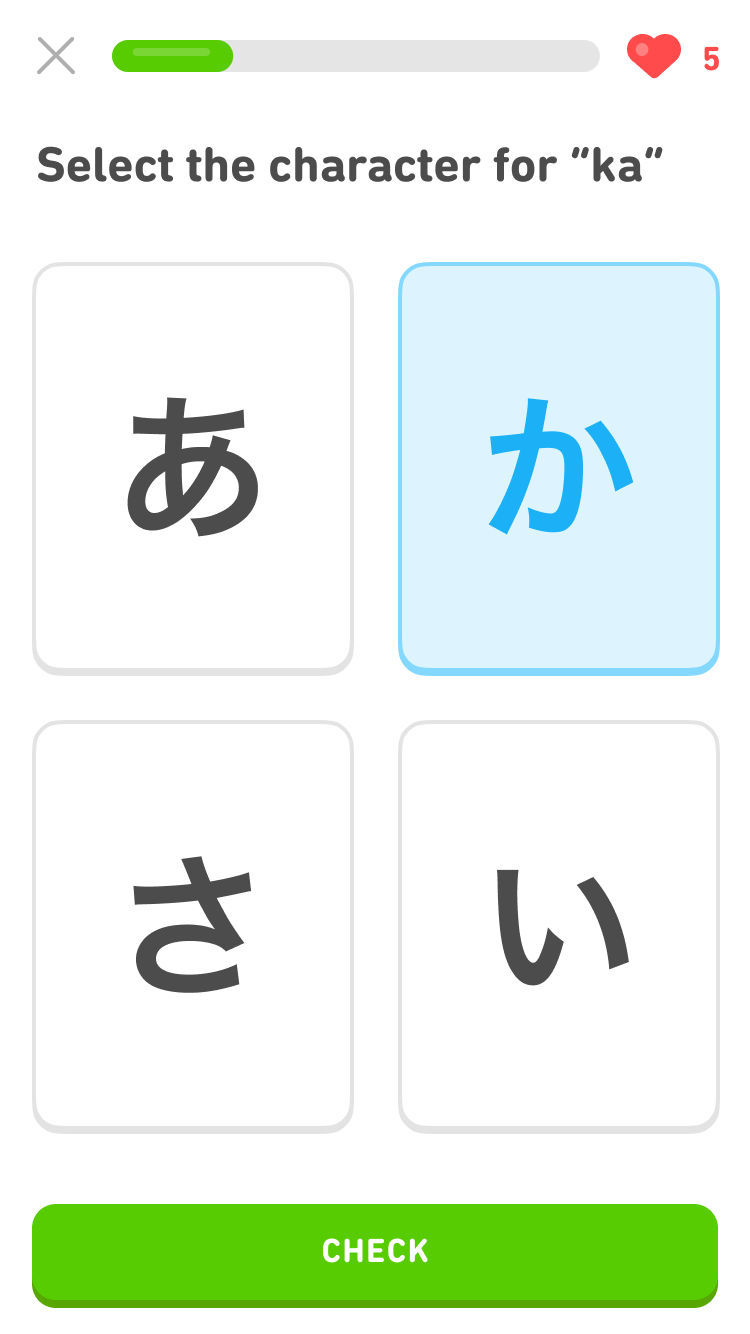 |
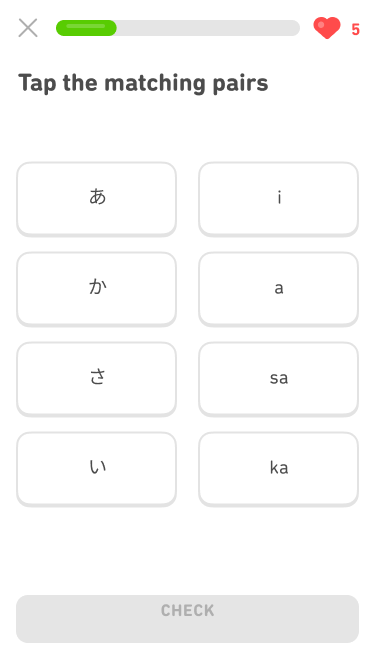 |
- Writing also means composing phrases and sentences, too! At the earliest levels, we help you learn to write in the language by focusing on single words and by providing a word bank to get you used to organizing sentences in the language. As you advance to higher levels, you’ll see fewer word bank exercises and more open-ended exercises, where you do more of the writing yourself!
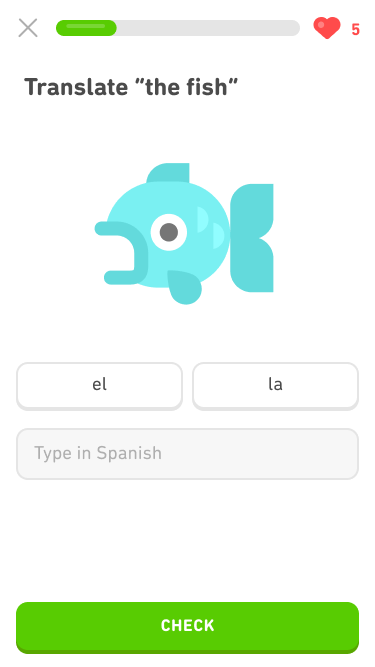 |
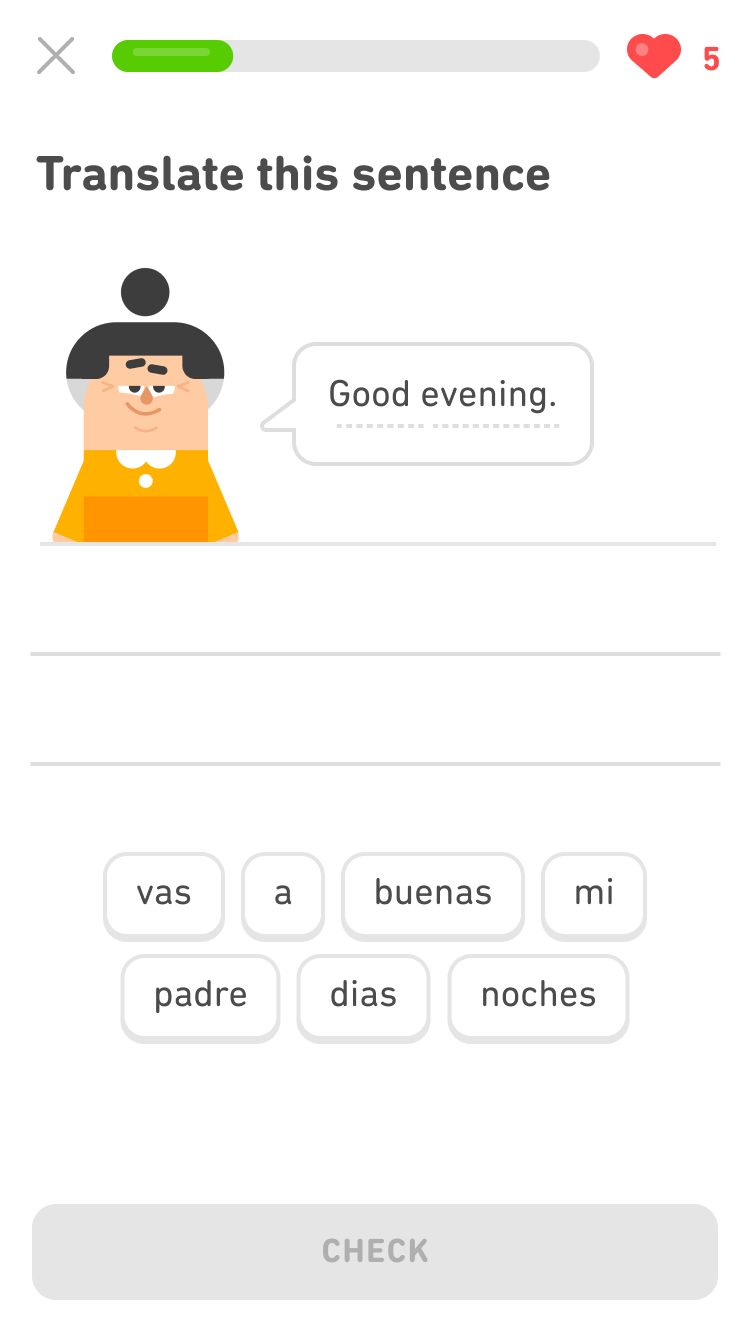 |
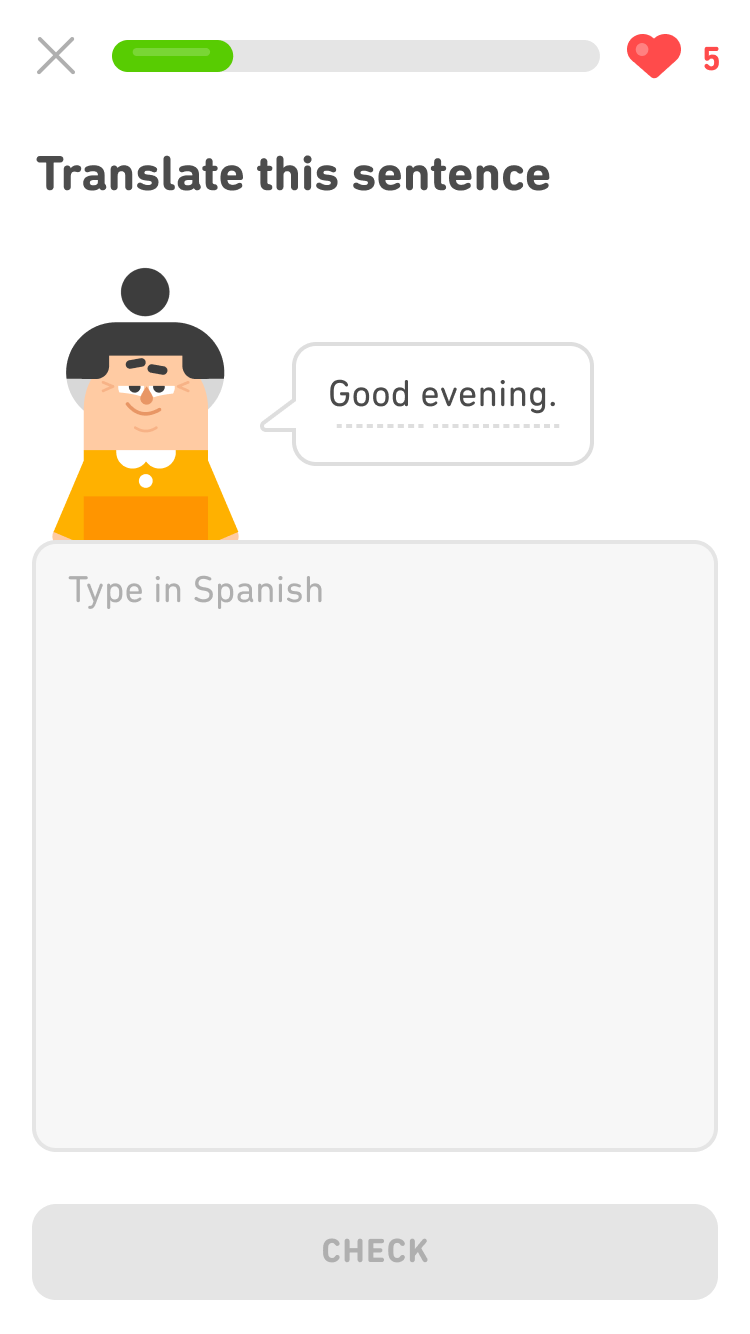 |
- Of course, some learners like a challenge. Did you know that exercises in higher levels let you turn off the word bank and instead use your keyboard to type in the language? Check to see if there is a blue icon at the bottom near the “Check” button. This is a great way to get in the habit of writing as soon as you feel ready. If typing in the language with your thumbs is too tricky, try it from a full-sized keyboard on your computer by doing lessons on the Duolingo website. And if you’re not quite ready yet—don’t worry, we got you: Just keep using those word banks!
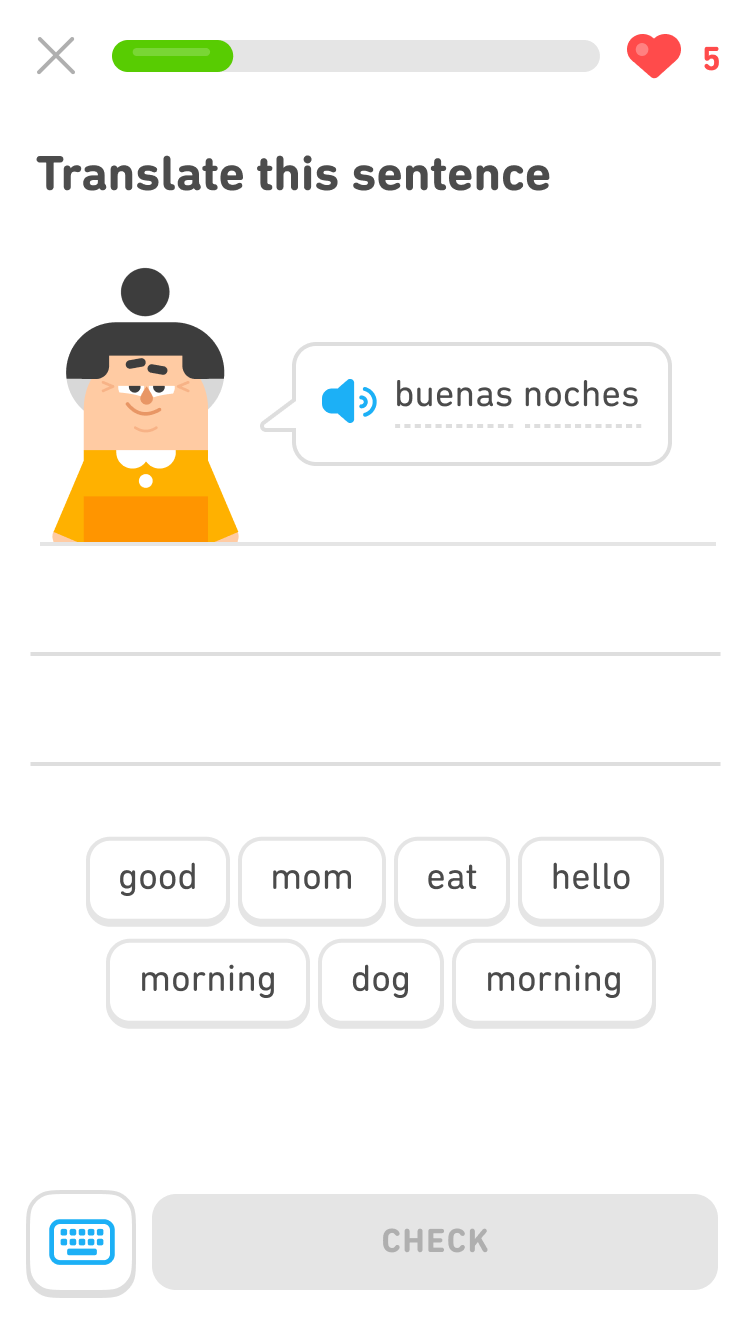 |
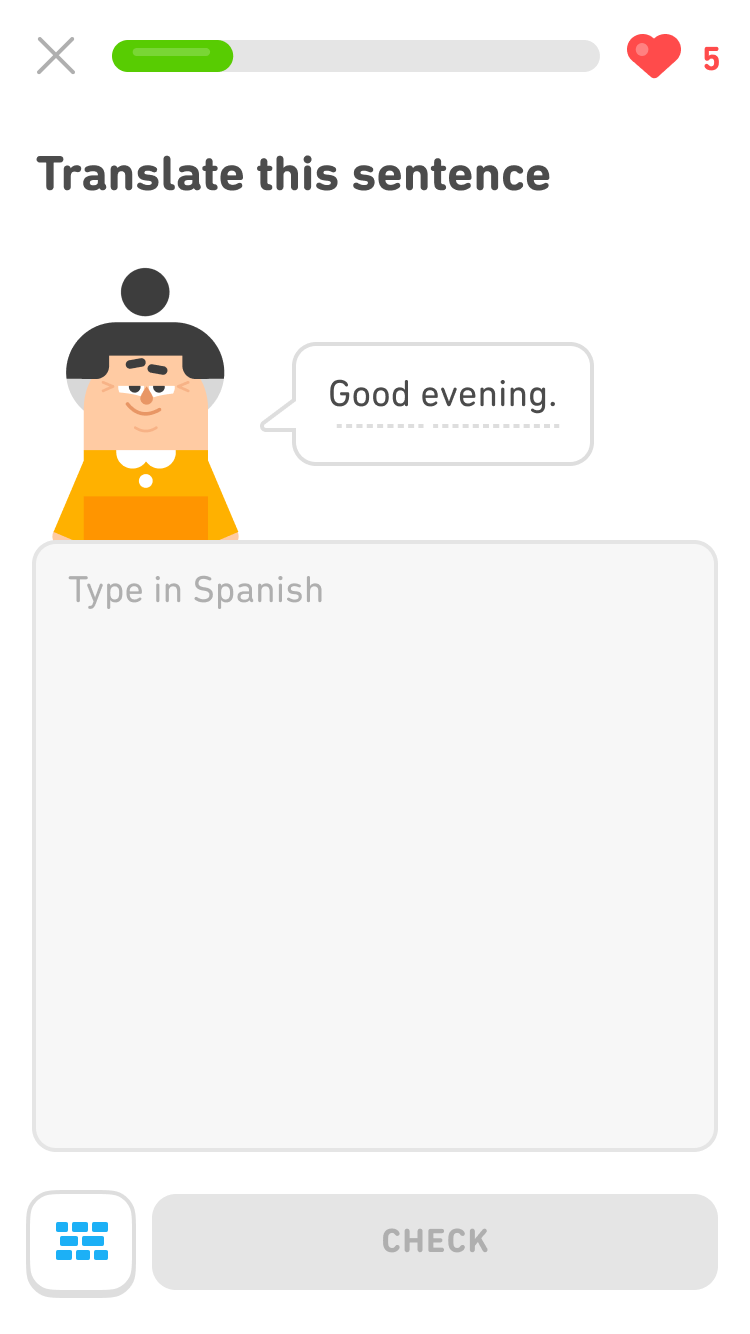 |
- For certain languages that use non-Roman scripts, we provide lessons focused on the letters or characters and their sounds and meaning. These lessons are available for Japanese, Arabic, Hebrew, Yiddish, Hindi, Greek, Russian, Ukrainian, and Korean.
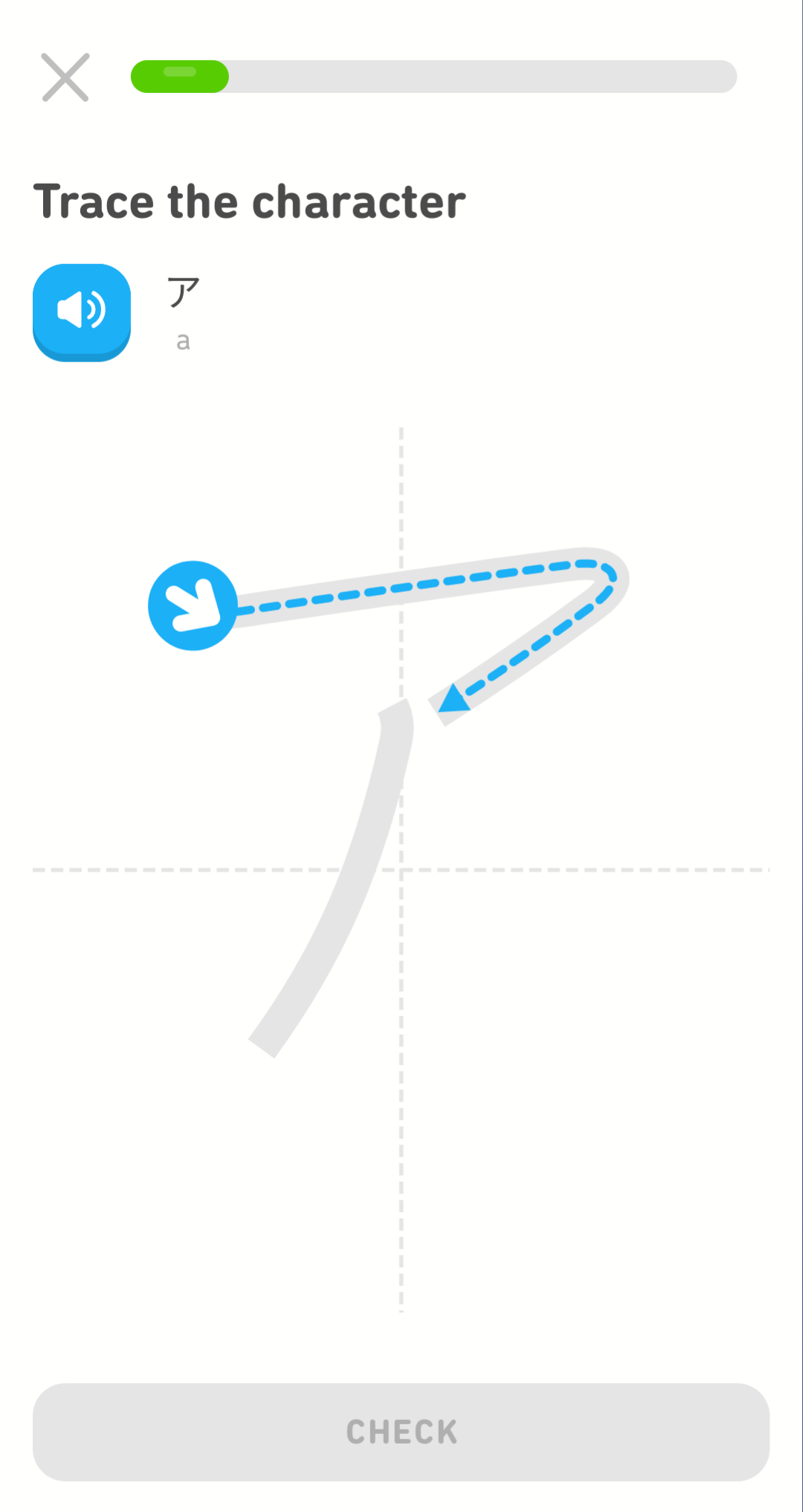 |
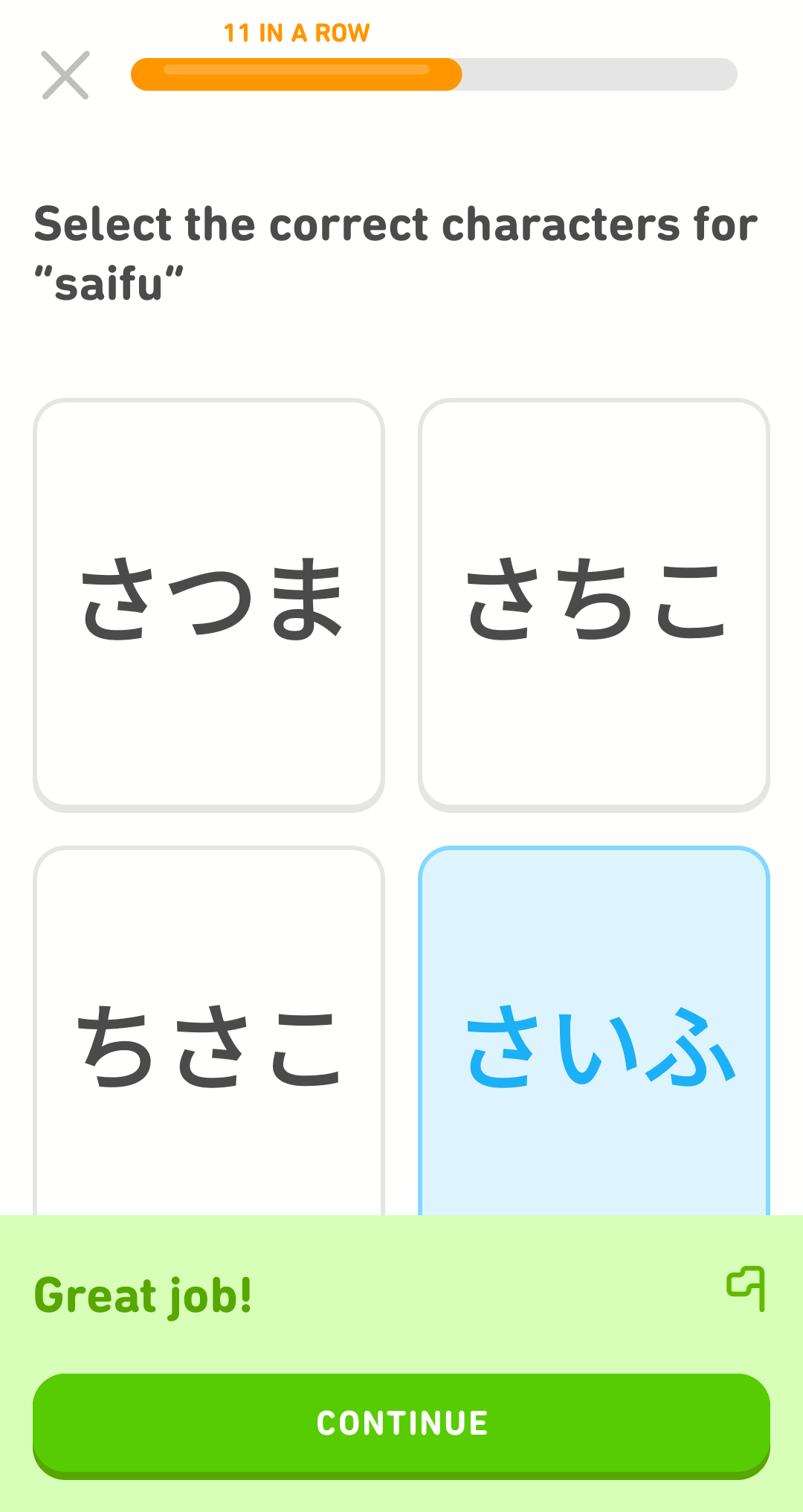 |
Let’s talk strategy: How does writing work?
Unlike reading and listening, writing is a productive skill, because you are producing the language… which can feel like a lot of pressure! Writing is a great way to get comfortable with producing the language, because it allows your brain to think more slowly and carefully about the sentences and words that you want to use. (Of course, in exciting text conversations you might want to be able to write as fast as you think!) This piecing together of words, phrases, and endings is what we described as bottom-up processing in our reading post. To write, you retrieve the words that match your intended meaning, and the more time you have to retrieve words, the easier it can feel.
Of course, sometimes retrieval is tricky, even in languages you’ve spoken your whole life. Have you ever felt like a word was on the tip of your tongue? You wanted to say a specific word but you just couldn’t think of it, and instead you could only remember words that sounded similar! Language research[1] shows that when you’re retrieving words in your new language, your mental muscles have to really flex to get you producing the words you want: you have to avoid picking similar words in the new language, and you even have to keep words from your other languages from bubbling to the surface. So for example, if you’re trying to write the Spanish word carta “letter,” your brain has to hold back related Spanish words (like página “page” and escribir “write” and even cara “face” because they start the same), and you have to work to keep in check all the non-Spanish words you know (like paper in English and lettre in French). Even people who are super highly proficient in multiple languages need just more milliseconds to recall words that have lots of related words. In fact, someone who knows Spanish and English has to do extra cognitive work to retrieve carta “letter” from memory since there are some especially distracting English words, like card and cart, in the mix. But your brain is made for this kind of linguistic balancing act! Luckily, we don’t have to rush in writing, so whether you’re smidgen slower or not, your message will be what matters.

Some parts of writing are the same no matter the language (you’re always doing retrieving!), but there are also a lot of differences to learn about writing for different languages and cultures. While some cultures write from left to right (like English and Spanish), others write from right to left (like Arabic and Hebrew). That means that if you’re reading an Arabic book you’ll need to start from what English speakers think of as the back! In our blog post about reading, we learned a bit about languages that use characters in writing, and these languages can do some pretty clever things with their characters. Like in Japanese, the characters themselves sometimes look like what they mean: the Japanese character 木 ki means “tree,” 林 hayashi means “woods,” and 森 mori means “forest”!
Learning off the field
To really knock it out of the park, find ways to incorporate writing practice in your everyday routine!
- For fast and easy practice, try writing your shopping list in the language you are learning.
- On your phone or computer, install a keyboard in the language, so that you can more easily text, search, and Tweet in the language.
- Make a friend at a Duolingo Event or in our Forum and become text penpals!
- Find Facebook groups, subreddits, Twitter communities, and other groups that use the language, and spend some of your social media time writing quick responses in the language. Soon you might be writing even longer messages!
- Check out this guide of writing goals for more ideas at different levels!
For rookie learners, focus on writing what you do know. It can be tempting to want to write out everything in your own language first, but it’s even better practice to think up what you want to say using only what you know. You can start your writing by relying on the exact words and sentences you learn in the course, and then build up to writing on your own, reusing familiar words and grammar. That means that if you don’t know past tense yet, just worry about writing everything you can in present tense! Another good strategy for beginners is to practice useful “chunks” of language; “I am going to” and “I would like” are two chunks that you can use to write all kinds of sentences (“I am going to the park today. I am going to walk. I am going to bring a snack and I am going to eat it.”). You can tailor this to yourself by thinking of the specific words and phrases that you use the most in your own language, and learn to write them in the new language!
For more veteran learners, try using writing to engage with the community who uses the language you’re learning. This could be through forums or websites, by finding digital penpals, connecting with people in your own community who use the language, or even by writing the old fashioned way—pen and paper—to people around the world! You can also use writing for more personal practice by starting a language diary where you write a little bit each day—maybe a paragraph or more as you get more comfortable! To practice specific topics, try switching up when you write your entry each day: to practice writing in the future tense, write in the morning about your plans for the day, or use entries at the end of the day to practice the past (“Hey diary, today something really cool happened…”). And remember to treat your diary like a close friend: Don’t worry about making mistakes, anything you tell your diary will be a secret!
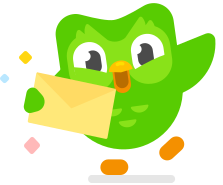
Taking your learning to the big leagues
Successful communication always relies on combining your language skills! Now that you know more about how we’re helping you become a skilled writer in the language, check back next week to learn about the fourth key language skill: speaking!
Deibel, I. (2020). The contribution of grammar and lexicon to language switching costs: Examining contact-induced languages and their implications for theories of language representation. Bilingualism: Language and Cognition, 1–16. DOI: 10.1017/ S1366728919000865 ↩︎
